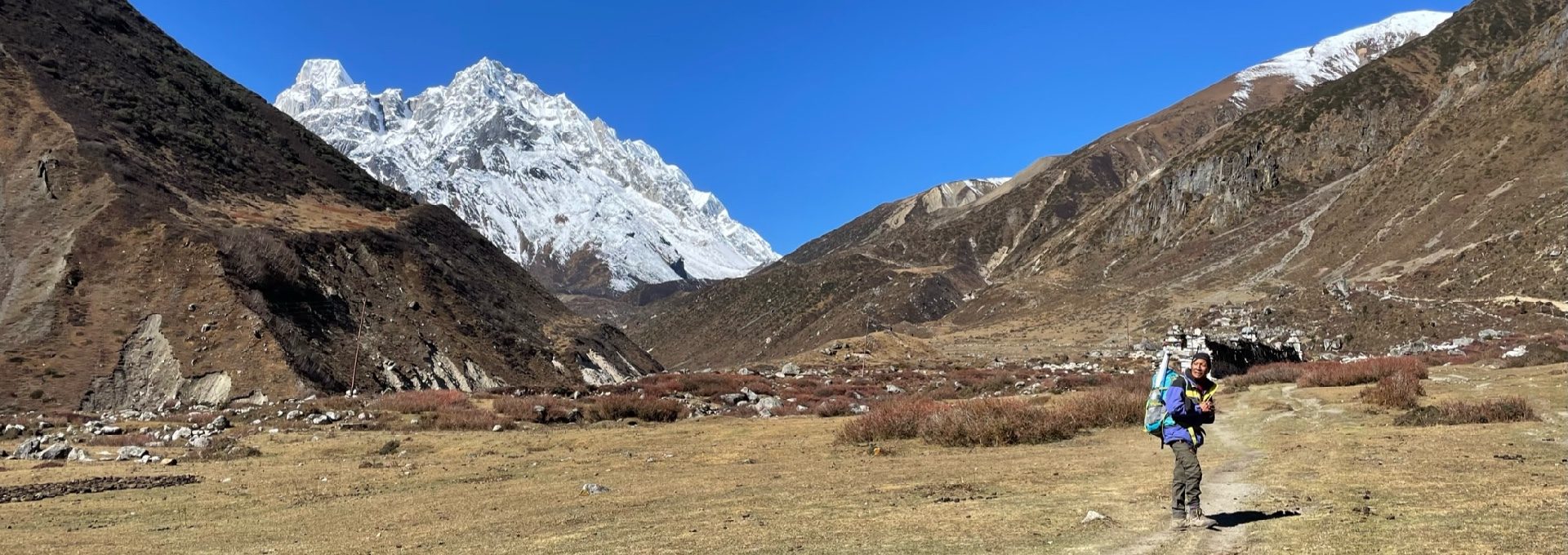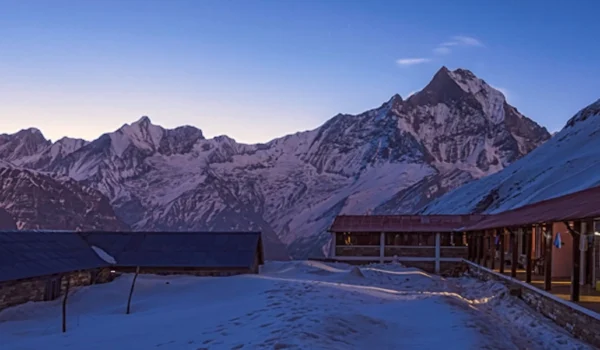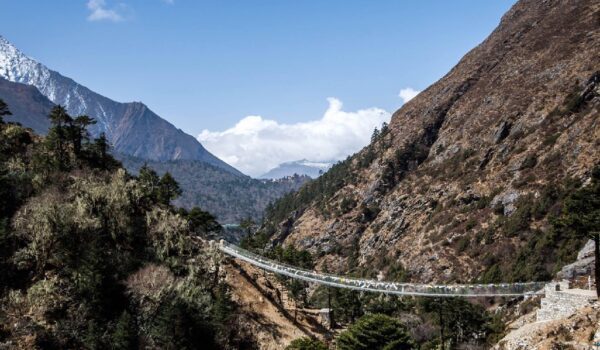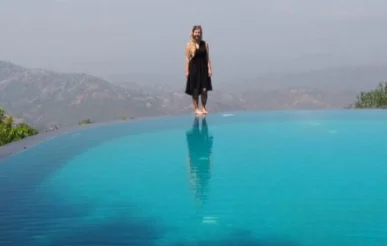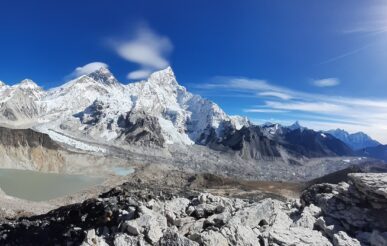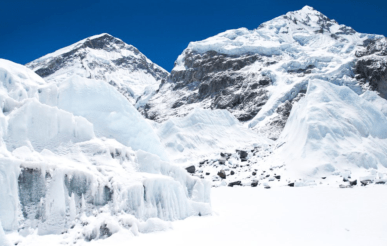Langtang Valley Trek Cost
Langtang Trek is one of the most chosen destinations in Nepal, providing an attractive opportunity for trekkers to experience the natural beauty of Langtang National Park. It is an excellent chance to discover the beauty of the Langtang Region in terms of nature and culture. This not only includes the exposure to the Himalayas but also the sights of flora and fauna of Langtang National Park, accompanied by the snowy peaks of Langtang Lirung, Langtang Ri, Shisapangma and many more. During this trek, the Tamang Heritage Trail, Cheese Factory and Kyanjin Gompa are significant attractions.
The trek starts with a six and a half-hour bus ride from Kathmandu to Syabrubesi. During the tour, you will cross through beautiful Nuwakot and Rasuwa district countryside, such as Trishuli, Battar, Bandre, Kalikasthan, Dhunche and Bhalu Kharka. The views of the green hills, forests, terraced fields, Trishuli River and the hanging cliff on the way are stunning, and the first trek experience is quite adventurous.
The Langtang Trek is undoubtedly an enjoyable journey – but How Much Does This Trek Cost? For your prior information, this trek is not long and expensive as other packages such as Everest Base Camp, Manaslu, or Annapurna Circuit Trek. You can enjoy the behold of the mighty Himalayas and Tamang Culture at a minimum Cost, which are discussed below:
Langtang Valley Trek Cost Between $585 to $900
The cost of Langtang Valley Trek will, on average, vary between $ 585 to $900, basically due to the number of days spent and the services offered. Hence a 7-day Langtang Valley Trek will approximately Cost USD 585 which includes permits, guides, lodging, and meals. Nevertheless, expenses for the 10-day Langtang Valley Trek will be slightly, for it will entail more days and services offered. If people want to complete the Langtang valley and also do the Gosaikunda Trek, they should be prepared to pay around $1,085, over 10-12 days.
Professional Guidance
While hiking through the trail, there will always be professional guides who will be with you to guide you through the right path and also give you useful information about the area’s vegetation, wildlife, and customs.
Package Inclusions
The Package of USD $585, and $900 entails all the necessary services, permits, food, and accommodation during the trek. As soon as you set foot in Kathmandu, you’ll be under our care to make your trip as smooth as possible. We have arranged accommodation in a comfortable tea house that provides a homely environment after a tiring day’s trek. All meals provided are for energy bearing with meals for different diet preferences.
This cost also encompasses transportation to and from the Langtang region thus eliminating the need to worry about transport Costs, especially during your time of trekking. The transfer will be in a private vehicle from Kathmandu to Syabrubesi, which is the starting point of the trek and will be comfortable as well as the scenery on the way.
Further, the package offered by the company entails the services of an exclusive English-speaking experienced guide who will be accompanying the clients at all times in the trek, and porters to carry the clients’ luggage meaning that the clients do not have to struggle to carry their bags in the trek.
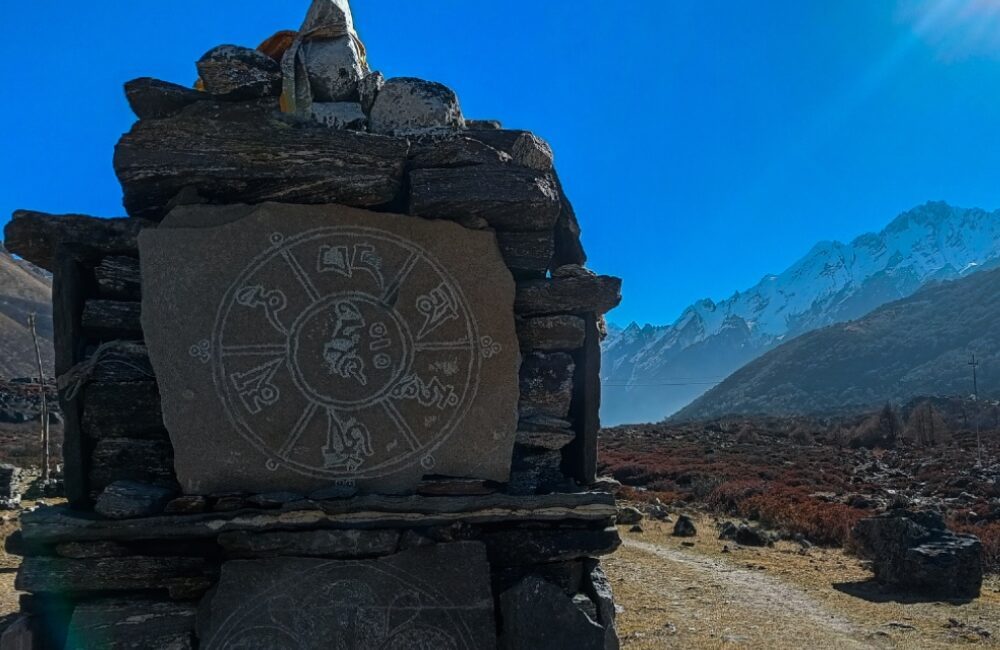
Langtang Trek With Magical Summits
Choosing the Langtang Trek with Magical Summits not only offers great value for money, but the clients are also helping the local communities in that area. Some of the fees that you pay for the treks go directly towards the preservation of natural resources and the inhabitants of the regions you are to visit. This trek is a perfect one for those who want a mix of cheap, adventurous, and cultural trek; experienced trekkers, and new bees to the Himalayas.
Best Langtang Valley Trek Itineraries and Cost in 2025 and 2026
Langtang Valley Trek 9 Days Itinerary at Cost $665 to $900
- Day 1: Arrive in Kathmandu
- Day 2: Drive from Kathmandu (1,400m) to Syabrubesi (1,550m) – 7 to 8 hours
- Day 3: Trek from Syabrubesi (1,550m) to Lama Hotel (2,380m) – 5 to 6 hours
- Day 4: Trek from Lama Hotel (2,380m) to Mundu / Langtang Village (3,450m) 5 hours
- Day 5: Trek from Mundu (3,430m) to Kyanjin Gompa (3,870m) – 3 hours
- Day 6: Explore Tserko Ri (4,985m) – 5 to 6 hours
- Day 7: Trek from Kyanjin Gompa (3,870m) to Lama Hotel (2,380m) -6 hours
- Day 8: Trek from Lama Hotel (2,380m) to Syabrubesi (1,550m) – 5 hours
- Day 9: Drive from Syabrubesi (1,550m) to Kathmandu (1,400m) – 7 to 8 hours
- Day 10: Fly home
Langtang Valley Trek 7 Days Itinerary at Cost $585
- Day 1: Drive from Kathmandu (1,400m) to Syabrubesi (1,550m) – 7 to 8 hours
- Day 2: Trek to Lama Hotel (2,380m) or Rimche (2450 m) – 5 to 6 hours
- Day 3: Trek to Mundu / Langtang Village (3,450m) 5 hours
- Day 4: Trek to Kyanjin Gompa (3,870m) – 3 hours
- Day 5: Trek to Lama Hotel (2,380m) or Rimche (2450 m)- 6 hours
- Day 6: Trek to Syabrubesi (1,550m) – 5 hours
- Day 7: Drive from Syabrubesi (1,550m) to Kathmandu (1,400m) – 7 to 8 hours
- Day 8: Fly home
Langtang Gosaikunda Trek Itinerary at Cost $1085
- Day 1: Arrive in Kathmandu (1,400m)
- Day 2: Drive from Kathmandu (1,400m) to Syabrubesi (1,550m) – 7 to 8 hours
- Day 3: Trek to Lama Hotel (2,380m) or Rimche (2450 m) – 5 to 6 hours
- Day 4: Trek to Mundu / Langtang Village (3,450m) 5 hours
- Day 5: Trek to Kyanjin Gompa (3,870m) – 3 hours
- Day 6: Trek to Lama Hotel (2,380m) or Rimche (2450 m)- 6 hours
- Day 7: Trek to Thulosyabru (2,250 meters)- 5.30 hours
- Day 8: Trek to Sing Gompa (3250 m )- 4 to 5 hours
- Day 9: Trek to Gosaikunda (4,380 m )- 5 to 6 hours
- Day 10: Summit the Laurebina pass (4700 m) and trek to Tharepati (3500 m)- 5 to 6 hours
- Day 11: Trek to Chisapani (2455 m) – 5 hours
- Day 12: Trek to Sundarijal (2400 m) then drive to Kathmandu (40 mins drive)
- Day 13: Day 9: Fly home
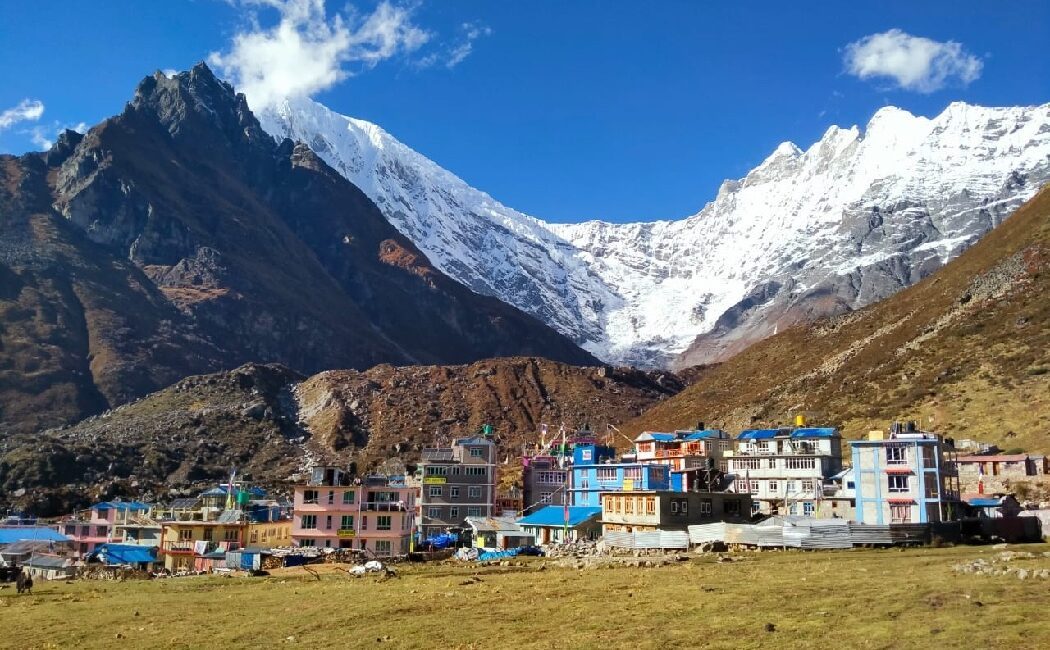
Transportation Cost
The Cost of the Langtang Trek includes transportation, which is one of the major expenses during the trekking period. Before starting your trek, drive to Syabru Besi, a roadhead. Several means of transportation are available for this journey, such as tourist or public buses, rented jeeps, taxis, etc.
Public Buses
- Duration: 8-9 hours
- Distance: 122 Kilometers
- Comfort: Basic
Public buses are the most affordable means of transportation, where tickets go around NRs. 300 per person (Approximately USD 2.75). Kathmandu to Syabru Besi takes 7-10 hours on the bus, and the return journey will also be charged for this only.
Tourist Buses
- Duration: 7-8 hours
- Distance: 122 Kilometers
- Comfort: Higher than public buses
- Safety: Potentially safer than public buses
Tourist buses are costly than public bus, possibly safer, and more comfortable than standard buses. Most trekking agencies provide tourist bus services in their package, so it is essential to know whether you are getting it for free in the trek Cost or not. It is often said that tourist buses charge anything between NRs. 1000 to 1500 per person.
Private Jeeps
- Duration: 7 hours
- Distance: 122 Kilometers
- Capacity: 7-8 passengers
- Comfort: Affordable and comfortable
For those looking for affordable but comfortable means of transport, there are plenty; one of them is hiring a private jeep. The cost is nearly about USD 200 altogether and each jeep can take 7-8 guests. This option may be cheaper when used in groups, for instance, in large families or business people. You can split the Cost between the travelertraveller which would be around $20- $30 per person.
Additional Considerations
Do not forget that your experience will be from Kathmandu to Langtang, and the mode of transport to the trailhead at Syabrubesi will also be a part of the trek. Including these transportation Costs in your budget is essential since the road networks may be poor, affecting the time taken and the money spent.
Permits Cost
To set off your journey to the Langtang Trek, you must obtain two permits. They are Langtang National Park Entry Permit and TIMS (Trekkers’ Information Management System) Card. You can get them from Nepal Tourism Board in Kathmandu or from Dhunche Check post in Rasuwa, before your journey begins.
Langtang National Park Entry Permit
Entry Fee for Nepalese Trekkers:
This Entry Permit is essential because this trek takes you through the cores of Langtang National Park. For the trekkers of Nepal, the entry fee is as low as NRs. 100 per person per entry, thus it is very Cost effective and can be considered within the reach of the average citizen to tour their country’s natural wonders. This low Cost can help in the preservation of the park’s trails, wildlife conservation, and the cultural heritage sites that the future generation must also see the beauty of Langtang Valley.
Entry Fee for SAARC Country Trekkers:
For the trekkers coming from the SAARC countries the entry fee is NRs. 1,500 per person per entry for the first two entries on the same day. The fee is still affordable and it offers people an incredible value of the experience that Langtang National Park has to offer – both in terms of the stunning scenery and the colorful culture.
Entry Fee for Foreign Trekkers:
For the foreign trekkers the entry fee has been fixed at NRs. The Costs of entry for individuals include 3000 USD Per Person on average. Also, the children who are below 10 years of age are allowed to visit the National Park for free.
TIMS (Trekkers Information Management System) Card
The Cost of TIMS Card is Rs. 2000 per person for all trekkers. You can get it from the Nepal Tourism Board Office by submitting different documents such as copies of your passport, visa, permit fees and photographs.
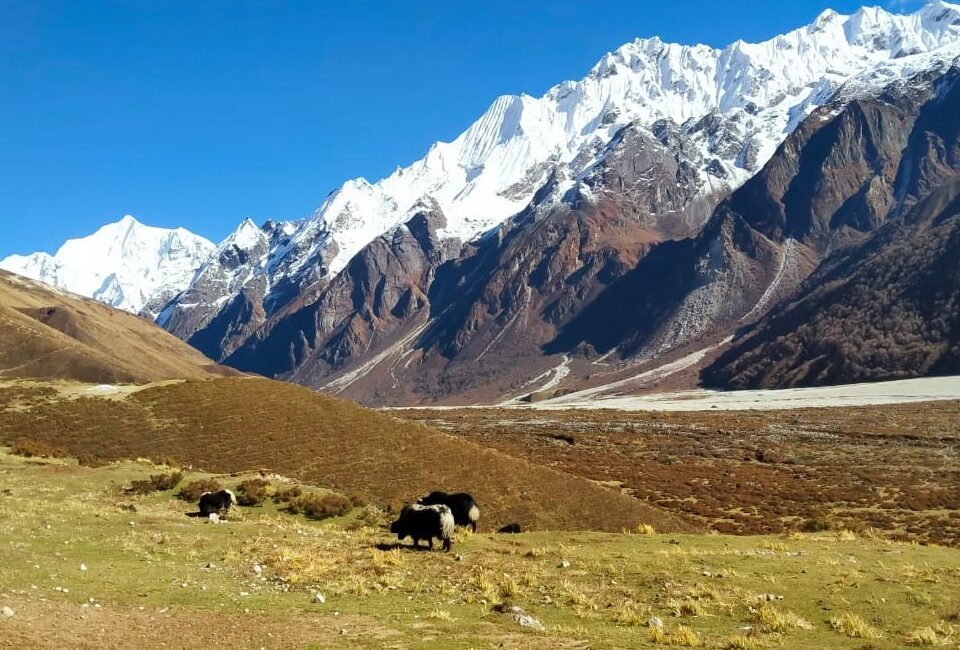
What Are The Accommodation Types and Cost On Langtang Valley Trek?
Accommodations and logistics should be well planned in advance when embarking on the Langtang Trek. The trail features a number of tea houses and lodges, but equally, opportunities exist to camp in more remote areas. Let’s look at some options of accommodations and Costs associated for the Langtang Trek.
Accommodation Options on the Langtang Trek
- Tea Houses and Lodges
- Camping
Tea Houses and Lodges
Tea houses are also the cheapest accommodation in the Langtang Trek, Costing between $5 to $7 per person per night. They provide simple services like shared facilities, dormitory-style bedrooms, power, and food. You will be offered 24-hour electricity and internet services in some tea houses.
However, privacy is relatively low in such an environment since everyone shares the space. Some tea houses are available along the length of the Langtang Trek, and there may not be many in the areas off the beaten track.
Camping
Camping is another accommodation common to trekkers on the Langtang route, especially in areas lacking tea-house establishments. As previously mentioned, going camping can significantly help to cut down expenses on accommodation as it is one of the critical savings that need to be planned and arranged. Camping items such as tents, sleeping bags, cooking utensils and gas canisters, cooking pots and other necessary foods are supposed to be brought by trekkers themselves.
However, camping is a little less safe than tea houses or lodges, which should be considered. The weather conditions, for instance, during off-peak seasons, such as during the monsoons or winter, can be a significant hindrance. This is particularly true with heavy rainfall and snow that affect the stability of the tined camp and, therefore, require quality equipment.
Some of the trekking agencies provide the camping gear and some support, but in many instances, the trekkers themselves are on their own and have to take up most of the responsibilities for the camping needs.
Food Cost
Since Langtang Valley Trekking is a multi-day journey, carrying enough food and water to sustain energy levels and good health throughout the trip is necessary.
Food Costs around $5 to $7 per meal, up to $10 to $15 per day during the Langtang Trek. Taking breakfast usually Costs between $3 and $5 per day. Plastic water bottles can be bought at $2 each; if one is to take 3 liters of water per day, it comes to $6. Altogether, while on the Langtang Trek, one is likely to spend between $25 to $30 daily on meals and water. Since the trek is a 5-day trip, you should estimate that the Cost of food and water will be about $125-$150.
Guides Salary
From the 1st of April 2023, the Nepal Tourism Board and the Nepal Government made it compulsory for all trekkers in Nepal to have a guide. This regulation was developed to increase the safety and security of those who trek due to many mishaps in the trekkers’ society, such as injuries, missing persons and even death.
People planning to go for the Langtang Trek while taking the services of a guide would charge between $25 and $35 a day. Some of the benefits of this fee are: It also covers services such as guiding and counseling emotionally and physically in case of an accident or while seeking medical attention.
Porters Salary
Hiring porters in Nepal for trekking will Cost somehow less than guides. On average, Porters Charge anywhere from $20 to $30 per day per person. Porters carry a maximum weight of 25kg during the trek, so if you are lightweight, you can share one porter with two trekkers, eventually reducing the Cost.
Travel Insurance and Cost
It is essential to have a travel insurance for the Langtang Trek to help cater for risks like altitude sickness, accidents or extreme weather conditions. This ensures that you are economically protected for emergency medical Costs, helicopter evacuations, trip cancellation, and other Costs, making it very important for any trekker to take this coverage.
Travel Insurance Costs differs from one company to another which might Cost anywhere from $150 to $200 per person. By comparing different policies, you will be able to identify the right coverage for your trip and thus avoid worrying about possible accidents while exploring the beauty of the Langtang region.
Miscellaneous Costs
During the Langtang Trek, there are many other expenses such as Wi-Fi, charging, hot showers, and tipping which can be quite heavy on your pocket and generally speaking are not included in the trek packages. It’s good to set aside some pocket money for these.
Charging Fees
You will be charged anything between $2 to $5 for any of your electronic devices per hour of usage. It is advisable to carry spare batteries and a power bank so as to cut Costs.
Hot Shower Cost
The Cost of taking a hot shower is about $2 but at high altitudes, it can go up to $5. Some lodges may offer it for free as part of your stay while others may charge separately so be ready for that.
Tipping
While it is not compulsory to tip, it is appreciated. Tippers, in most cases, give their porters and guide around 10-15% of the total Cost of the trek, usually upon completion of the trek.
Take-home Gifts
Some such items might include locally made accessories jars, handbags, and even some dried fruits which do make quite good souvenirs. Such items are worthwhile buying either for friends or keeping for oneself.
Kathmandu UNESCO Heritage Sites Entry Fees ($2 to $15)
Additional tours around Kathmandu can be done before or after the Trek to Langtang Valley. If you want to take a relaxing UNESCO Heritage Tour then do budget for entrance fees to various heritage sites. Almost all cultural sites have entrance fees, ranging from $2 to $15, which are not included in the package. Since visiting all sites in one day isn’t feasible, you can choose which ones to explore based on your preferences and the entry fees. Below are the entry fees for the UNESCO Heritage Sites in Nepal for different nationals.
Swayambhunath Temple (Monkey Temple):
- Foreign Nationals: NPR 200
- SAARC Nationals: NPR 50
- Chinese: NPR 200
- Nepalese: Free
Amideva Buddha Park: Free
Kathmandu Durbar Square:
- Foreign Nationals: NPR 1000
- SAARC Nationals: NPR 500
- Chinese: NPR 1000
- Nepalese: Free
Patan Durbar Square:
- Foreign Nationals: NPR 1000
- SAARC Nationals: NPR 250
- Chinese: NPR 1000
- Nepalese: Free
Patan Golden Temple (Hiranya Varna Mahavihar):
- Foreign Nationals: NPR 100
- SAARC Nationals: NPR 50
- Chinese: NPR 100
- Nepalese: Free
Bhaktapur Durbar Square:
- Foreign Nationals: NPR 1800
- SAARC Nationals: NPR 500
- Chinese: NPR 500
- Nepalese: Free
Changu-Narayan Temple:
- Foreign Nationals: NPR 300
- SAARC Nationals: NPR 100
- Chinese: NPR 300
- Nepalese: Free
Pashupatinath Temple:
- Foreign Nationals: NPR 1000
- SAARC Nationals: NPR 1000 (Free for Indian Nationals)
- Chinese: NPR 1000
- Nepalese: Free
Boudhanath Stupa:
- Foreign Nationals: NPR 400
- SAARC Nationals: NPR 100
- Chinese: NPR 400
- Nepalese: Free
How To Save Langtang Trek Cost?
If you are on a tight budget and have not maximum allocated money, there are several ways to save your money. Here’s how:
Traveling in the Off-Season
Traveling during the off-peak season is another way of saving on the expenses one will incur on the Langtang Trek. Sometimes, the Price for accommodation, food, water and other essential commodities are relatively low, especially during the off seasons, unlike during the climbing seasons. Since there are few travelers on the trail, you are likely to get the best accommodations you want. Further, the Price of the trek packages is comparatively lower in these months when the flow of tourists is low. But they must be ready to encounter unfavorable weather conditions like rainfall, snow and wind.
Negotiating Prices
Bargaining will help you plan your Langtang Trek, as it is a vital aspect that needs to be considered. This is especially true with trekking agencies, where companies are willing to discuss with you to try to meet your needs and your purse. By talking to your representatives, you learn more about your needs and the amount of money you will need to spend or even if there are areas you can cut down on.
Likewise, you can discuss the charges for guides and porters, and this is something one can bargain on. Spend time sitting down with them, explaining the situation, and making them understand that you expect them to charge a reasonable amount of money. It is also essential to be sensitive to paying employees a reasonable wage in appreciation of their effort and skills.
Renting Gear
The Cost of Purchasing Trekking Gear is likely because not everybody treks often. Hiring equipment is a viable option, especially if you are going for the Langtang Trek. In the Thamel district of Kathmandu, there are many stores where you can rent all the necessary trekking equipment for a relatively small amount of money compared to the Price of purchasing it. It also assists in the containment of expenditure and makes it easier to prepare the packing list.
Group Travel:
Organized travel is one of the best ways to minimize trekking expenses since people travel in groups. As part of group travel, the expenses such as accommodation, transportation, food and even the entire Package Cost are split. This means you will only be required to cater for a portion of the overall expenses, making the Langtang Trek cheaper.
Pack Lightly:
So, when packing your gear and equipment for the Langtang Trek, you should ensure you do not pack much. A person can get tired when carrying many items, and this can have a toll on the health of a person, especially if one is hiking in the mountains since the likelihood of getting altitude sickness is high. The trekkers must carry only what is essential in the Trekking Expedition, including thermal wear, backpacks, sleeping bags, boots and others.
Research Itinerary | Choose The Best Deals
When planning to go for the Langtang Trek, it is always wise to do so during the festival season when most trekking agencies have discount sales. If you want to book your trek in October when the festival of Dashain is celebrated, the chances of getting good discounts are higher. Likewise, most trekking organizations provide attractive packages during the New Year, Christmas, and other special occasions.
Research will be your strongest tool while you plan the Langtang Trek. Learn about the trail that the trek follows, what are the most important sights to be seen, and where is the opportunity to stay overnight. Settle upon a schedule that covers most of the impressive features of the trek but without feeling rushed. Opt for local guides, and operators offering reasonably priced packages without compromising upon the safety of tours and services.
Frequently Asked Questions
What is the average Cost of the Langtang Trek?
The Price of the Langtang Trek starts from USD 585 per person to USD 1,085 per person for a standard 7-10 days trekking only. At Magical Summits, our cost of the 7 day Langtang Trek is USD $585 per person. This comprises of fees for permits, lodges, food, guide and porter fees, and transport from Kathmandu to Syabrubesi, the starting point of the trek and back. Prices depend on the period chosen, the number of people and the degree of accommodation required.
What is included in the Langtang Trek package?
The trek package includes:
- The price of the trek package includes:
- Transfer from Kathmandu to Syabrubesi and vice-versa, Kathmandu by bus or jeep,
- Basic teahouses accommodation during the whole trek,
- Three meals a day- Breakfast, Lunch, and Dinner,
- One fully licensed and experienced trekking guide,
- Usually one porter for every two trekkers,
- Langtang National Park entrance fees,
- Trekkers’ Information Management System card,
- Basic medical kit
- Generally, personal expenses, tips, and travel insurance, along with extra activities in Kathmandu, are excluded.
Are there any additional Costs I should be aware of?
The additional Costs may include:
- Travel Insurance: Compulsory for trekking, including high altitude rescue as well as medical evacuation (around USD 50 to 100).
- Tips for Guides and Porters: Suggested but not compulsory (about 10-15% the total amount of the trek Price).
- Personal Expenses: This includes items such as snacks & drinks, hot shower, Wi-Fi, battery charging & souvenirs.
- Kathmandu Accommodation: If not included in the package the fees range from USD 25-100 per night depending on the hotel.
- Meals in Kathmandu: Unless it forms part of the deal where the charges range between USD 5-15 per meal.
- Visa Fees: Depending on your nationality it will Cost you between USD 30- 50 for a 15 to 30 days visa.
